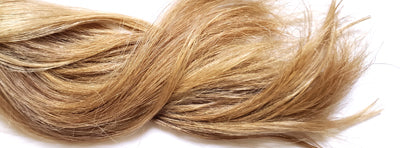
Creating Blondes
Share
How to use cassia to create a range of natural, plant based blonde shades.
The light golden yellow dye molecule in cassia is not strong enough to dye white hair / light hair an obvious blonde. 
But in combination with henna & indigo, we can make it happen. 


N – Natural white wool
1 – Cassia + lemon juice
2 – 90% cassia, 5% henna, 5% indigo + cream of tartar
3 – 90% cassia, 10% henna + lemon juice
4 – 90% cassia, 10% henna + orange juice
5 – 90% cassia, 10% henna + cream of tartar
|6 – 80% cassia, 10% henna, 10% indigo + amla
7 – 70% cassia, 15% henna, 15% indigo + amla + cream of tartar
8 – 66% cassia, 16.6% henna, 16.6% indigo + amla + cream of tartar
9 – 95.7% cassia, 1.4% Henna, 2.8% indigo + orange juice
10 - 95.7% cassia, 1.4% Henna, 2.8% indigo + lemon juice
11 – 66.6% cassia, 33.3% henna + orange juice
12 – 80% cassia, 20% henna + orange juice
13 – 50% cassia, 25% henna, 25% indigo + cream of tartar + amla
14 – 33.3% cassia, 33.3% henna, 33.3% indigo + cream of tartar
** Always measure the powders. Don't make a paste then measure ratios of paste.
*Colour as seen is not guaranteed because of so many factors... also, your devise / monitor might be altering the colour ;)
After choosing the cassia : henna : indigo ratio for the desired colour, it’s time to choose your acidic additive to dye release & to manipulate the tone. Don’t just use water, cassia must be dye released with an acidic liquid.
Example of the difference in Cassia alone depending on the fruit acid it's dye released with:
For Bright & warm shade of blonde, you can use lemon juice, tartaric acid, acerola cherry powder, citric acid, orange juice or cranberry juice (the red colour of cranberry will not impact the blonde).
For cool, ash or bright that gradually darkens over time, you can use cream of tartar, vinegar, chokeberry powder & amla. (warning: vinegar can make you smell like wet dog).
When using a powder, always blend with distilled or reverse osmosis water. Never use tap water with cassia.
Reminder: natural hair dyes can only make hair darker or shift tones. We can’t lighten dark hair (red, brunette or black) to blonde. These Blonde colour mixes will only be visible on white / very light hair.
For more details, see the master acid post here:
Most important info when using cassia:
Make sure you don’t have hard water or mineral buildup in your hair. Zinc can react with cassia, creating blotches of greens & browns in the hair. If there’s a chance that you have hard water or mineral buildup in your hair, wash your hair with a clarifying shampoo & rinse with distilled water. Don’t let tap water touch your hair again until you’re fully finished the process. Even still: be safe – always collect hair from your brush in advance & do a test before using cassia on your whole head.
Unlike henna, Cassia doesn’t bind permanently to the hair. The higher the cassia ratio, the more likely it is to wash out after around 3 weeks.
If you want to play with ratios of powder using the colour example pictures above as a guidline, follow these rules:
- Alter henna & indigo a tiny bit at a time. There’s no way to naturally lightening the hair if you go too dark by accident.
- If you don’t want red hair, have less henna than cassia. Increase henna a tiny bit at a time.
- Keep the ratio of henna: indigo close. You can play with a little more indigo than henna, but be careful! Too much indigo will give you violet or blues - that can’t be chemically lifted! Indigo is forever.
** Always measure the powders. Don't make a paste then measure ratios of paste.
